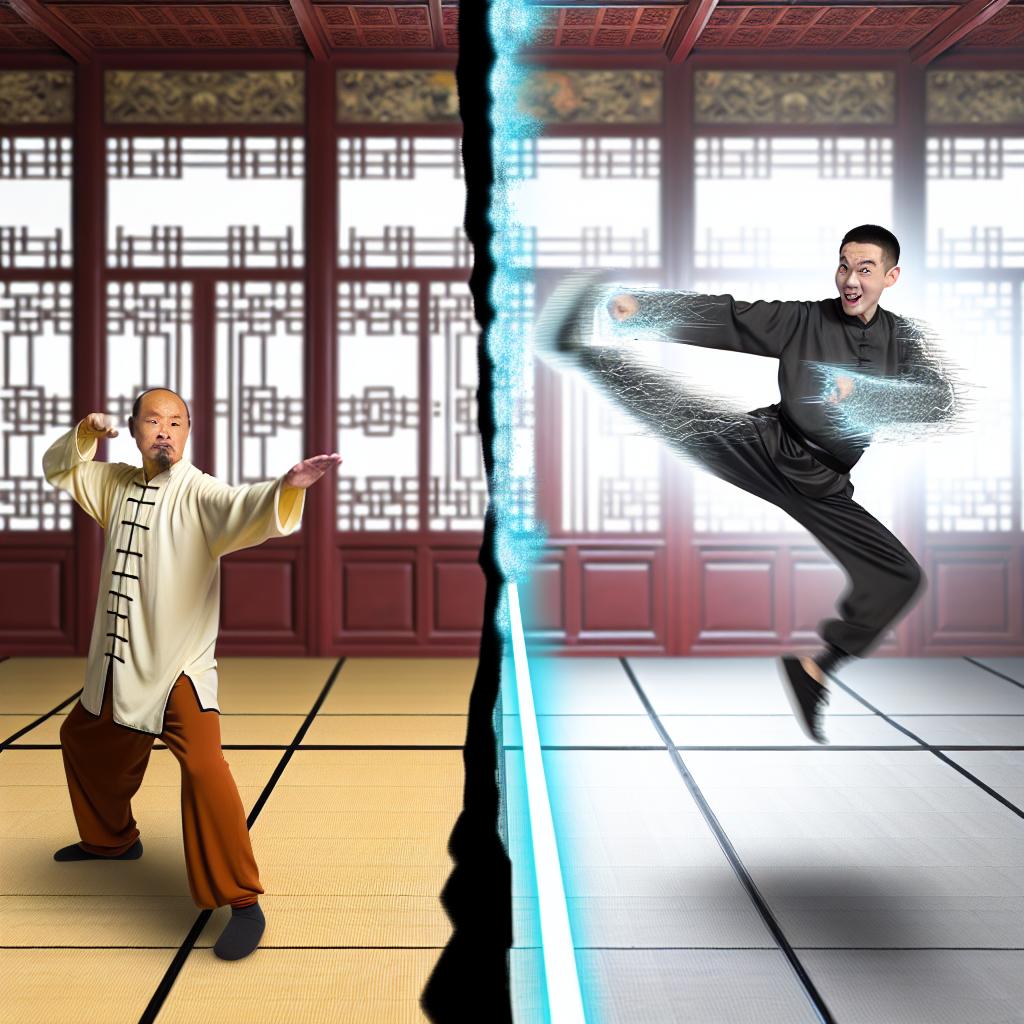
Understanding Kung Fu: The Martial Art
Kung Fu is widely recognized as a collection of Chinese martial arts that carries an extensive historical lineage, reaching back several millennia. This ancient practice combines a harmonious blend of physical exertion, self-defense techniques, and philosophical teachings. Kung Fu serves not only as a means for honing physical prowess and self-protection but also as a holistic practice that integrates numerous facets of traditional Chinese culture, including medical knowledge, meditation practices, and ethical training.
The Diversity of Styles and Techniques
Kung Fu is not a monolithic discipline but rather an umbrella term that covers an impressive variety of styles and techniques. Among the myriad of martial art forms under its banner, some well-known styles are Wing Chun, noted for its focus on close combat and quick movement; Tai Chi, which emphasizes slow, controlled movements and is often practiced for its health benefits; and Shaolin Kung Fu, renowned for both its rigorous physical training methods and its rich philosophical underpinnings. Each style is characterized by its distinct forms and movements, creating a tapestry of martial art practices that offer something for everyone—from the combat-orientated to those drawn to meditative practice.
The Historical Context
Historically, Kung Fu evolved from the need for self-defense and the desire to maintain physical fitness in ancient China. Over time, it became interwoven with the cultural tapestry of China and spread far beyond its borders. The philosophies inherent in Kung Fu not only impart physical discipline but also encourage practitioners to adopt ethical conduct and explore deeper spiritual questions. Such values reflect broader Chinese philosophical traditions, including Confucianism, Buddhism, and Daoism.
Kung Fu: The Legend Continues – A Television Series
Kung Fu: The Legend Continues marked its place in television history as a successful television series that aired between 1993 and 1997. As the sequel to the earlier 1970s TV series simply titled Kung Fu, starring David Carradine, the newer iteration introduced fresh storylines and characters while maintaining its compelling elements of martial arts and drama. The series centers around the journey of Kwai Chang Caine, a Shaolin monk, and his son Peter, who works as a police detective.
Setting and Narrative
While the original series was set against the backdrop of the American West, The Legend Continues transitions to a modern urban setting. This temporal and spatial shift allows for broadened narrative possibilities, embedding the martial arts action in contemporary society, thereby resonating with a new generation of viewers. The father-son dynamic forms the core of the story, driving the narrative as they tackle various crimes and confront injustices together. Packed with thematic explorations of familial bonds and ethical dilemmas, the show adds layers of human interest to the martial arts spectacle.
Primary Differences
When juxtaposing the broad concept of Kung Fu with Kung Fu: The Legend Continues, the most salient distinction is their intrinsic nature. Kung Fu represents an age-old discipline rooted in physical training and cultural philosophies, whereas Kung Fu: The Legend Continues is crafted as an entertainment vehicle—a television series rich with dramatized narratives and contemporary storytelling. Kung Fu epitomizes the intersection of physical, mental, and spiritual development, whereas the television series provides a modern twist, offering narratives that are interwoven with crime and justice themes.
Explore Kung Fu: The Legend Continues
Cultural Impact
The cultural impact of Kung Fu cannot be overemphasized. It has profoundly influenced martial arts cultures globally, advocating for a balanced approach that combines physical fitness with self-discipline and mental fortitude. Its reach extends beyond mere physical activity; it fosters a holistic model that touches upon lifestyle, health, and moral growth.
Conversely, Kung Fu: The Legend Continues played its part in disseminating the intrigue of martial arts to a broader audience. By infusing Western media with elements of Chinese martial arts, the show captivated viewers who might not have engaged with traditional martial arts practices otherwise. This accessibility contributed significantly to the Western fascination with martial arts, igniting interest and encouraging further exploration among its audience.
Both Kung Fu and Kung Fu: The Legend Continues have indelibly marked their respective fields. They continue to fascinate and instruct martial artists and television audiences alike, perpetuating the allure of martial arts through both practice and entertainment. Whether one is drawn to ancient traditions or modern reinterpretations, the essence of Kung Fu manifests in varied forms, each offering its unique allure and value.
This article was last updated on: May 17, 2025

